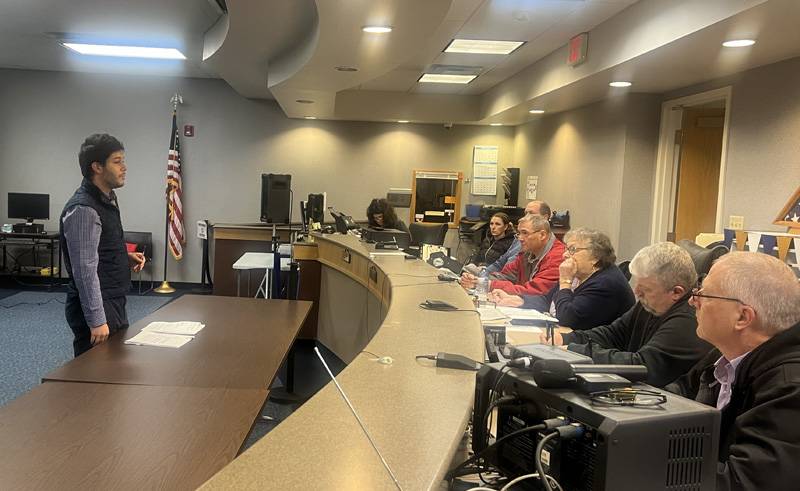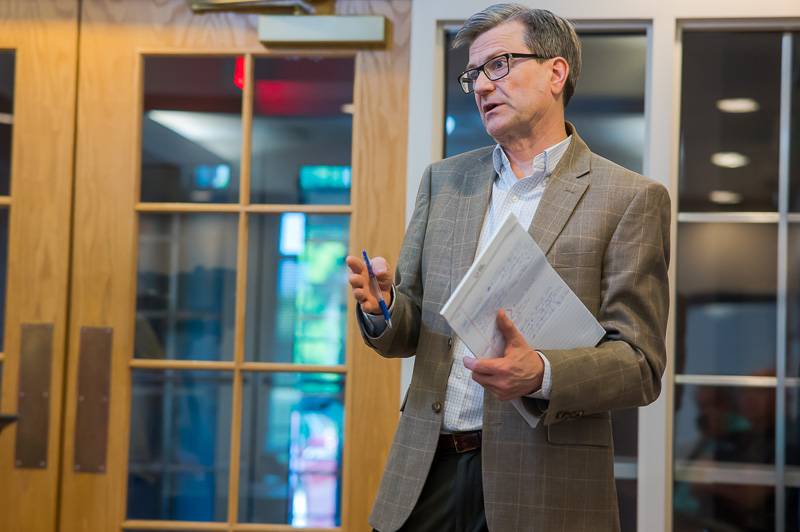Batavia planning board approves Verizon phone tower with a couple of plot twists

Photo by Howard Owens.
There were a couple of turns in the road on the way to approval for a new mobile phone tower for Verizon customers in the area of 9321 Wilkenson Road in the town of Batavia, but in the end, the town's planning board approved a special use permit and site plan review.
Bell Atlantic Mobile Systems LLC is the official applicant. The tower will be 154 feet high, have a four-foot lightning rod, and nine antennas on it, along with associated equipment on the ground.
Tuesday's meeting was the second time the board approved the same project.
The first approval had to be redone because of a "miscommunication," said board President Kathy Jasinski. At a previous meeting, the board moved ahead with approval even though the project had not yet been reviewed by the Genesee County Planning Board.
Last week, the county board recommended approval but with modifications. Members voted to require space on the tower for public safety purposes, such as the 9-1-1 system at no cost to the public.
That was another turn in the road.
Steve Fantuzzo, an attorney with Nixon Peabody LLP, representing Verizon, said Verizon objected to that requirement.
"It's a takings issue," Fantuzzo told the board. "It's the government taking property without providing compensation. Basically, it is not legal for the county to say we're taking space on the tower, or else we don't recommend approval. So the reality is that Verizon will accommodate them, and when they request it, they're generally willing to accommodate that space, but as a condition and a requirement, Verizon would object to that."
Board members quickly agreed that space on the tower should not be a requirement but had a short discussion about whether to amend a motion to remove that requirement or if a motion to reaffirm the board's prior approval would be adequate.
The board's attorney, Matthew Fitzgerald, recommended reaffirming the prior approval.
"If you're going to override the county's recommendation, you will need to send them an explanation," Fitzgerald said. "You'll need a majority plus one vote, which, if all members here vote in favor, that's fine. You will need to send them the reason you decided to go against their recommendation."
The board did not need to incorporate that decision into the motion itself, he said.
"I think the minutes will capture the discussion that was just had, as well as me interjecting, clarifying that was the reason," Fitzgerald said.
The board unanimously approved both the special use permit and the site plan review.

